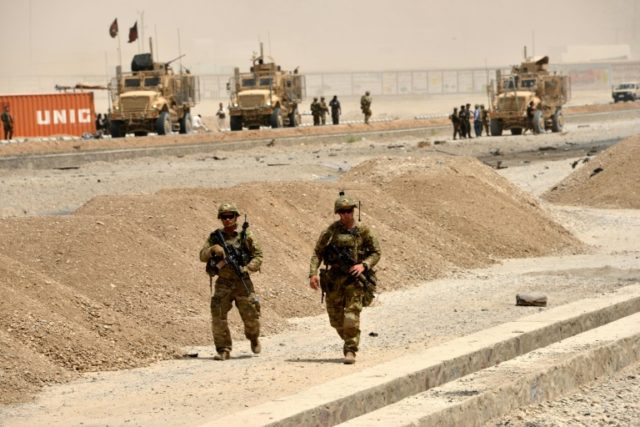Washington (AFP) – The Pentagon sharply raised its estimate of the number of US troops currently in Afghanistan Wednesday, ahead of a decision on adding thousands more under President Donald Trump’s new strategy for the war-ridden country.
Pentagon Joint Staff Director Lieutenant General Kenneth McKenzie said a comprehensive review showed there were approximately 11,000 uniformed US servicemen and women in Afghanistan, compared to the 8,400 number used since last year.
The new count, which includes temporary and covert units as well as regular forces, was made to establish the basis for an increase in troops — possibly by around 4,000 — under Trump’s revised strategy to better support Afghan troops in the fight against the Taliban.
But McKenzie declined to say how many more troops would be added.
Secretary of Defense Jim Mattis “still hasn’t made that decision,” he said, adding: “No troops have started to flow… no deployment orders have been issued.”
McKenzie said that after president Barack Obama set a ceiling of 8,400 troops for the country last July, military commanders had been hampered in their ability to deploy full units, leading to “unintended consequences”.
Meanwhile, short-term and clandestine units were not included in the count.
– New strategy –
The new estimate came nearly two weeks after Trump and his top cabinet and military officials decided to increase US soldiers and airmen in Afghanistan to put more pressure on the Taliban and other extremist groups.
Few details were provided on the new strategy, however, as Mattis said he wanted a clearer view of the actual number of US forces there.
US generals have for months been calling the situation in Afghanistan a “stalemate,” despite years of support for Afghan partners and an overall cost to the United States of about $1 trillion.
A US troop increase would allow the US- led coalition in the country to provide more advisors and tactical support to strengthen the Afghan army’s efforts against the Taliban.
McKenzie said the new count was an effort to be more transparent, but he said the Defense Department would not be providing much information on the breakdown of the US forces, so as to maintain operational security and avoid “telegraphing” US intentions to the Taliban.
The new Afghan strategy will take a page from successful US efforts over the past two years to strength Iraqi security forces against the Islamic State group with better training, logistical support and the battlefield backup of US artillery and air strikes on enemy positions.
But in Iraq most of the action against Islamic State fighters is in dense urban settings, while the Taliban are more spread out in the Afghan countryside, a battle situation Mattis has characterized as more like Vietnam.

COMMENTS
Please let us know if you're having issues with commenting.